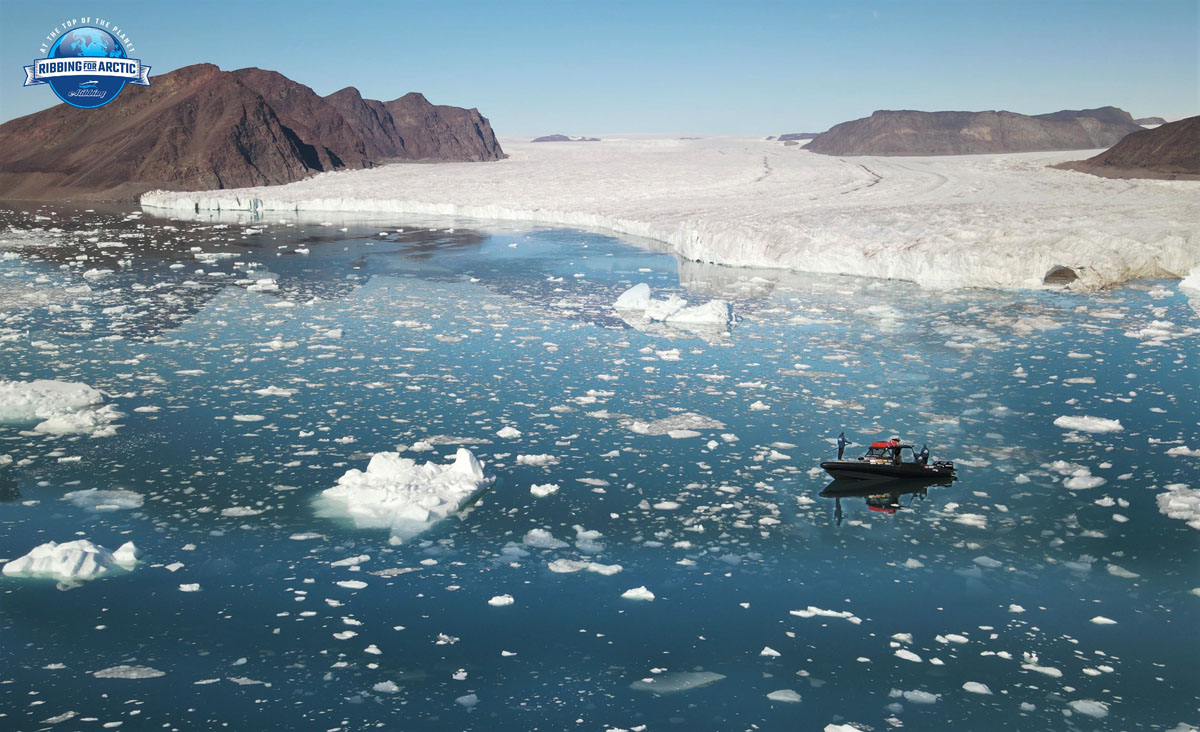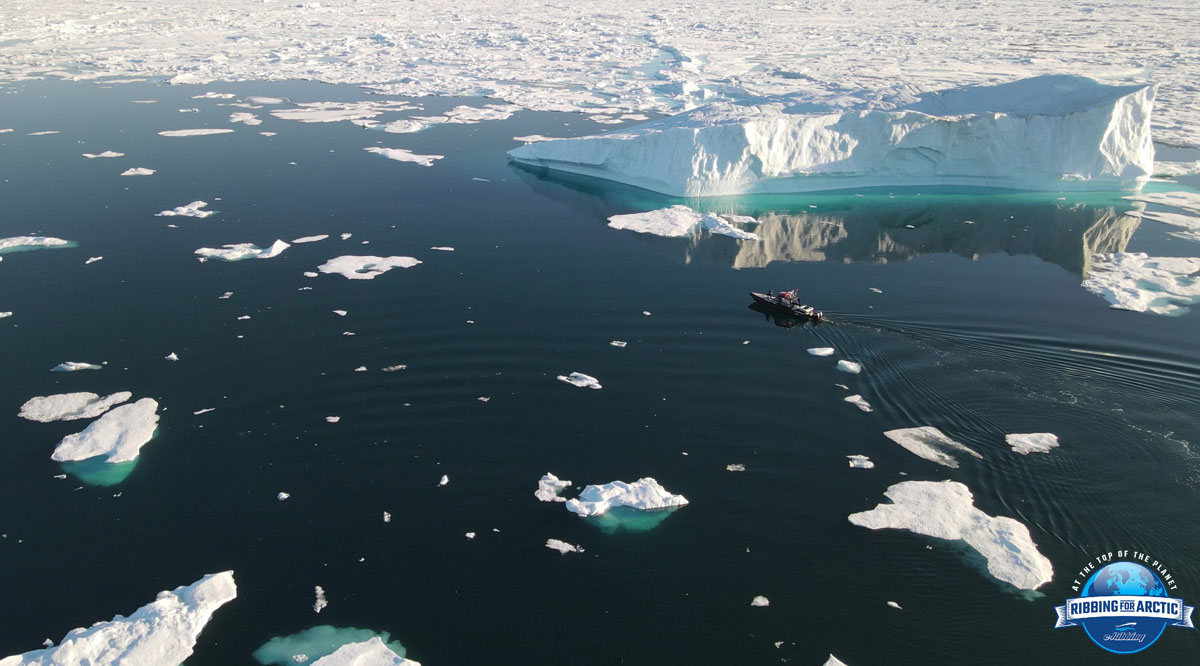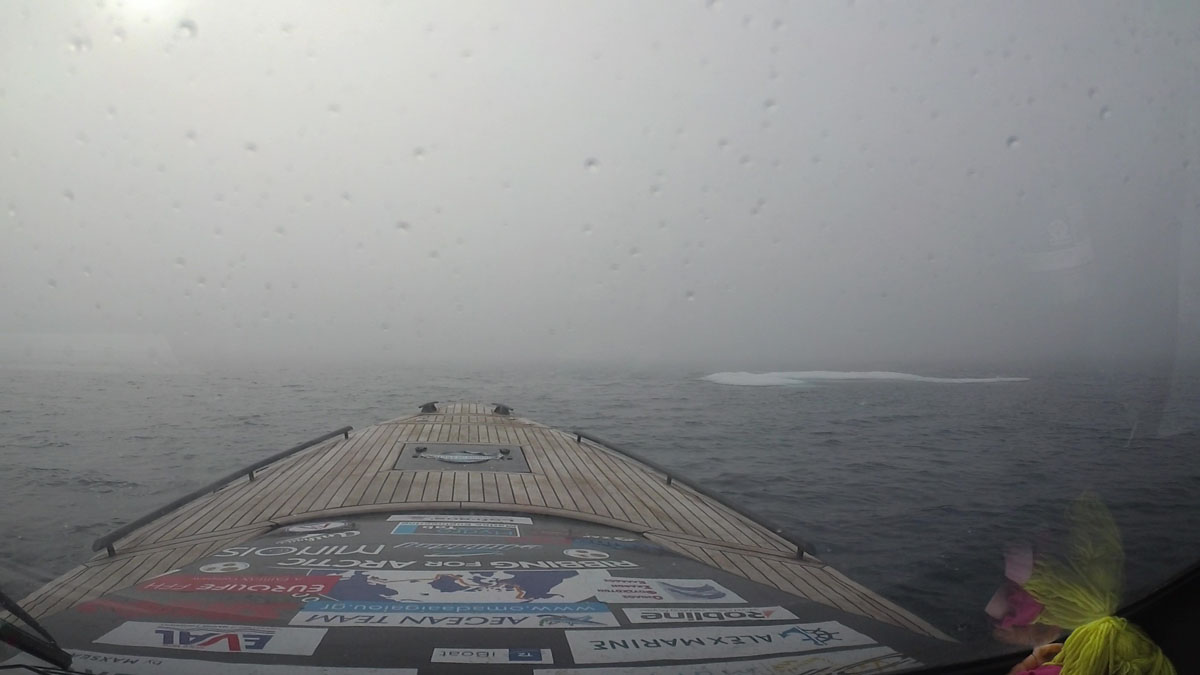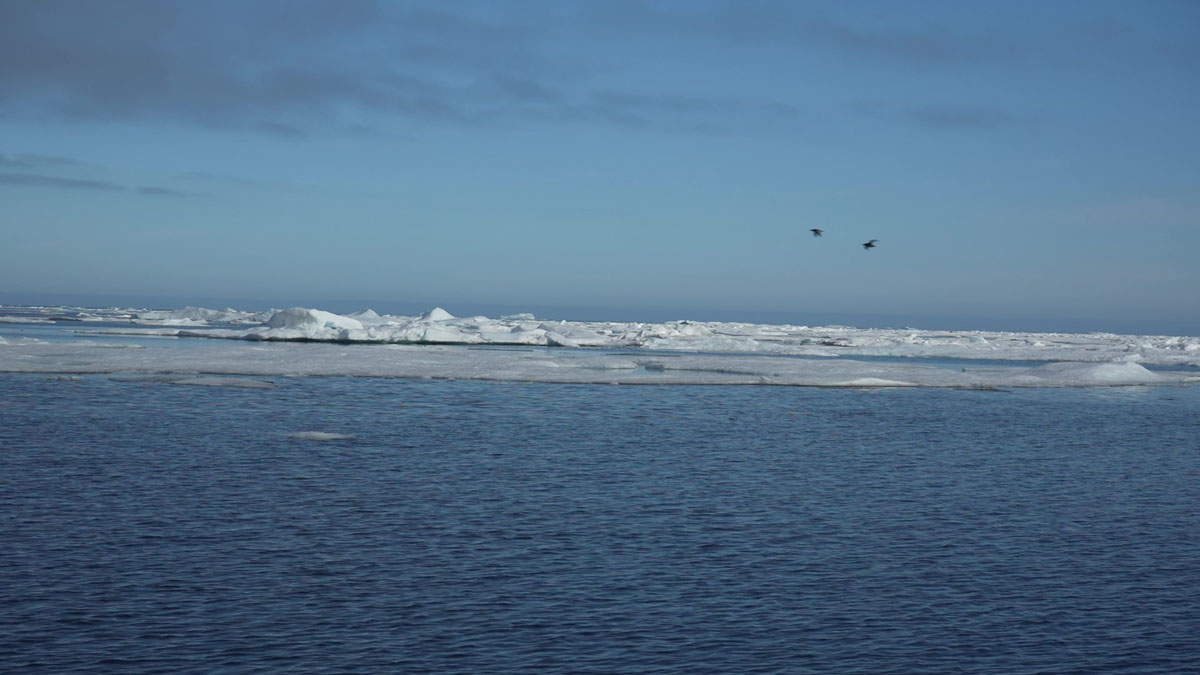
Isolated in Qaanaaq

From the 69th to the 77th parallel after 28 hours of continuous navigation

Isolated in Qaanaaq

From the 69th to the 77th parallel after 28 hours of continuous navigation

Our failed attempt to reach the shores of Canada
Alone and in fate of the unpredictable and often emotionless Mother Nature who seems like testing our strength, physically and especially spiritually. Every now and then images of our crossings came to my mind and I shuddered all over.
Solitude in the vast and often frozen ocean is both peaceful for the soul and terrifying for the mind.
But I felt wiser than ever.
We were emotionally damaged and felt many times at God's mercy.
We are nothing more than small drops in the ocean.
Absolutely nothing special at all.
DAY 33rd – Thursday, 4 of August
Position: 77°28΄N 69°14΄W – Qaanaaq (Thule)
We were moored to the edge of the long jetty which stretches for about 100 meters and is perpendicular to the sandy beach of the village.
In Qaanaaq there is no port and the jetty had just been built and it was the first year it was given to be used. But when the water recedes in the afternoon, the depths are so shallow that only the small boats of the locals can stand there.
Fortunately for us, there was only one point where the depth reached 80cm and so we were able to tie up without any problems. Otherwise we would have to stay ashore and go to the beach with our tender for resupply or for any other reason.
Special care is needed when approaching the beach while the waters are high. We have to stay several meters outside at the end of the jetty because when the waters recede, the depths are only a few centimeters and many rocks start becoming visible above the surface of the sea.
Qaanaaq is the northernmost housing estate in Greenland with a permanent population of 700 souls, and the second most northerly, and closest to the North Pole, housing estate in the world.
The colorful houses are built in rows andreach to the beach, while there are no cafes or restaurants. But there are two traditional hotels for accommodation,food and a large market with all kinds of goods. The large tanks and the petrol station are located on the main dirt road which is an imaginary continuation of the wharf, going up the slope and dividing the village roughly in half.
The Earth may be round, and there is essentially no such thing as the End of the World, but if we wanted to give this designation to a housing estate then it would certainly be Qaanaaq.
Very close to the North Pole and hundreds of miles further north than other inhabited housing estates, Qaanaaq is surrounded by glaciers and fjords while the waters in front of the housing estate are permanently filled with large and massive icebergs.
The wild beauty of the landscape in all its glory, with Mother Nature being the absolute ruler setting very tough rules of survival.
The view from the wonderful apartment which we were accommodated was excellent, but we never imagined that we would have to stay here stranded for so many days.
This day was primarily dedicated to refueling, which was handled by Nuka, our new friend and gas station attendant.
By late afternoon we were finished with the time-consuming and particularly tiring transfusions.
Nevertheless, we decided to make an effort to approach the northernmost village in Greenland, which is 35 nautical miles north of Qaanaaq, since the next day we intended to sail toGrise Fjord, Canada.
The sun was up despite the late hour and the sea was calm.
But we did not have time to go even 5 miles and found ourselves isolated again on the ice.
We tried in vain to find corridors for more than an hour.
So we decided to stay between the icebergs, having fun and taking some really nice shots with the drone, since the weather was perfect.
Shortly before midnight, we retired to our apartment and stayed up late studying the weather conditions for the next day as well as the accumulation of the ice in the wider area.
DAY 34th – Friday, 5 of August
A sunny Friday had rised up, the temperature reached 10 degrees and the sea was wonderful.
The egg codes, which give a general picture of the ice concentration in each area expressed in tenths, showed 4/10 which meant that we could navigate through the ice fairly safely when approaching the Canadian coast.
So we made the decision to leave Greenland after visiting first Siorapaluk.
At 13:00, after a difficult navigation among the ice, we finally managed to reach the northernmost village of Greenland which is very close to the 78th parallel.
A Danish frigate that anchored in the open sea was changing the incredible solitude of this place. We got close and for some time we talked with the skipper of the inflatable boat that carried the soldiers to the beach of the village.
Siorapaluk is a tiny, very small village with 40 inhabitants most of whom live here only in the summer months. With no infrastructure and only connection to Qaanaaq via helicopter, Siorapaluk is the most isolated village on the planet.
The absolute desolation and isolation was strongly felt from the first moment.
After a few moments of rest and the necessary photography, we turned our bow southwest towards Grise Fjord, Canada, at 215 nautical miles.
Apart from the many icebergs we encountered on our way, the weather conditions were very good and the sun continued to shine.
We were cruising along at 30 knots and quite enjoying it. We were well rested and looking forward to reaching Canadian shores.
But our joy only lasted for about one hour.
Suddenly, our prow sank into the fog and we were forced to greatly reduce our speed.
We were going again at 7 knots.
It might have been the thickest fog we've encountered so far.
Visibility was almost zero!
We might be used to it by now, but the sight of the ice popping out of the mist kept us very thoughtful and completely focused.
Fear was no longer inside us, but our anxiety was strong.
No one knew what awaited us beyond.
Navigation in polar waters cannot be compared to any other.
The wilderness, the isolation, the ice, the freezing temperatures and the incredibly dense fog that covers everything, raise the anxiety and insecurity to incredible levels that only someone who had experienced them can understand.
No matter how hard I try, I can't find the words that correspond to the moments we once again experienced.
The dangers posed by these conditions are enormous and only Saint Nicholas at our prow could protect us.
I left Carlos and Cris in the pilot station and went into the cabin to relax.
My instinct was not good at all and I wanted to be rested for the next coming.
After 3 hours of sailing, during which we covered only 18 nautical miles, the fog thinned considerably.
We sped up again and were now traveling at 32 knots.
But again, our joy did not last for more than one hour.
Far below the horizon, as far as we could see, the ocean looked frozen.
I spotted an open passage to our left and veered off course.
But I was on course for Grise Fjord.
No more than 20 minutes and the ice blocked our way again.
I tried to head further east where another free passage opened up, but after a while we were blocked again.
None of us spoke because of the anxiety that was already in its peak. We were constantly changing course and managed to reach a few hundred meters after some time. With continuous “slalom” between the ice, through channels that were getting narrower, we progressed slowly until the sea seemed all white everywhere.
I stopped the boat and we were trying to assess our situation against the current conditions.
We had covered about 100 nautical miles and wanted that much more for our destination.
But no one could guarantee us that if we continued on our course, the conditions would not get worse.
Now, we had fuel to go back to Qaanaaq.
But what if we went lower and ended up trapped in the ice?
Then there would be no option to return, due to autonomy.
I shuddered all over when I realized that the large pieces of ice were being moved at a great speed by the strong currents.
The passages behind us, through which we had passed, were no more there.
Feeling incredibly uncomfortable and embarrassed, it seemed abundantly clear that the risk of being trapped was enormous.
We were in the middle of nowhere and no one could help us.
North and very close was the North Pole.
South, Baffin Bay and below the vast Atlantic Ocean.
West, the frozen and desert islands of Canada.
East, frozen North Greenland and only small Qaanaaq were within 100 miles, but with no immediate aid infrastructure.
And just at the thought of our position, panic was just around the corner.
The air temperature was 0 degrees Celsius.
We felt what “cold sweat” really means just thinking about what could happen to us.
Never beforewe had felt trapped in the ice to sucha great extent, and the experience we had gained seemed powerless to give us a solution.
Mother Nature took care once again to give us a strong lesson, stressing us that we will be forever... Her students
Without further thoughts, great regret and against my will, the bow turned east again trying to find a way out of the ice.
But this time all the way to Qaanaaq.
We were going further and further east of Canada, anxiously searching for a passage to escape.
After half an hour and by radar’s help, which was our most trusted guide, we started to see open passages on our prow.
We sped up to 30 knots, running to get away from the hell we had just experienced.
It took some time before we felt safe.
It was a terrifying experience, and our exclusion a nightmare.
We were now 50 miles from Qaanaaq.
But again our feelings changed.
These constant ups and downs of our psychology are truly unspeakable.
Thick fog again, 7 knots again and focused on the radar, again concerns and dark thoughts.
We were slowly entering Qaanaaq Bay.
We only had 20 miles to approach the village.
Our anxiety was enormous as we knew very well that the concentration of ice here exceeded 5/10ths.
The morning we started our journey, everything was different and magical under the bright sun.
Now the thick fog covered everything and the scenery looked nightmarish to say the least.
We had such a hard time getting out into the village on our first entry where the drone finally helped us out, but then the sun was out again.
Now with this fog it was impossible to get the drone up again.
Air temperature at 0 °C.
Water temperature at +1 °C.
All I wanted now was to tie up at the wharf as soon as possible, and to be in my room to relax and release the enormous tension that had once again built up inside me.
That would be the happiest thing in the world that could happen to me at the moment.
Finally, the radar gave us the solution again.
We moved slowly and when our prow encountered an ice dam, we turned back and changed our course.
This was repeated several times, until after many attempts in a highly stressful situation and enormous concentration we managed to reach our desired pier.
It was midnight when we retired to our apartment, incredibly tired and exhausted.
It was a very difficult but also a lost day for us.
Without much talking we fell into a deep sleep.
We wanted nothing more than to close our eyes...
...keep Ribbing!











